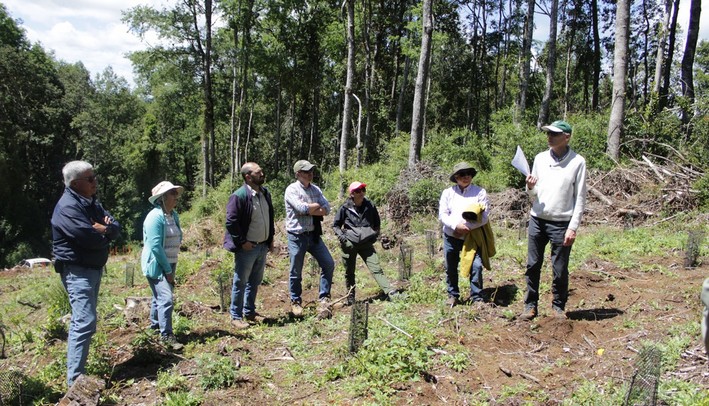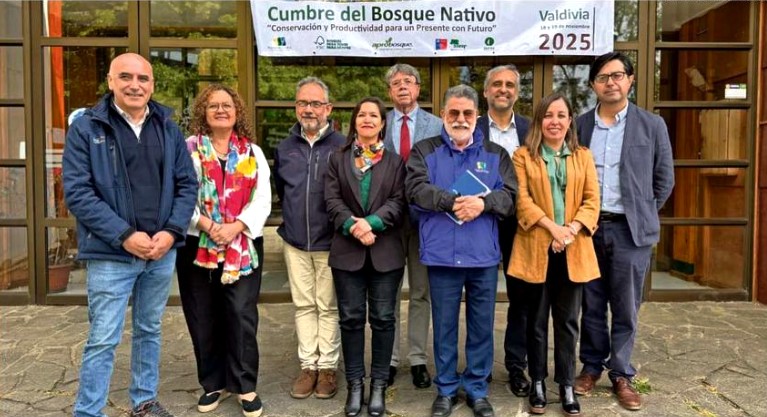New Technology Implemented to Detect Fires in Lago Peñuelas National Reserve
- The pilot project enables continuous monitoring of the reserve and early fire detection without false alarms.
The fire alert and detection network to be installed in Lago Peñuelas National Reserve integrates various technologies such as sensors, a panoramic visible and infrared spectrum camera, and a satellite communications system.
The pilot project, a first in Latin America, was realized following an agreement between the National Forestry Corporation (CONAF) and Axess Networks, the Chilean subsidiary of Spanish company Hispasat, one of the leading satellite communication operators with coverage in America, Europe, and North Africa. Joining them is their technological partner Pyro Fire Extinction, a company specialized in designing and manufacturing solutions for fighting wildfires, which develops Internet of Things (IoT) technologies—systems of physical devices that collect and transfer data via wireless networks.
Specifically, Bseed WATCH sensors and a panoramic video camera covering a 35-kilometer perimeter (6,189 hectares) were deployed. From their locations, they gather data on environmental variables such as temperature, relative humidity, CO2, wind speed and direction, and pressure, among others, transmitting it to a central hub, which sends it to the cloud in real time via satellite.
The combined data from the video cameras, weather conditions, and satellite images of surrounding areas are processed into a real-time risk map for the next ten days. Through a notification system, CONAF personnel receive the most relevant information and alerts when fire risk is highest or when sensors detect a fire.
Early Fire Detection
These sensors also enable immediate fire detection without false alarms, significantly reducing response times, risks associated with such disasters, and costs from delayed action. The collected data helps understand and anticipate fire behavior, the flammability of forest fuels, and local weather forecasts for the coming hours. This is vital for the effectiveness and safety of firefighting efforts at all times, especially at night.
For CONAF’s executive director, Christian Little, this agreement is highly relevant because "we are fully committed to improving fire alert and protection systems. The implementation of this solution, which exponentially enhances technology integration in this field by detecting new fires immediately, will help us provide the best response to such disasters."
According to Luis Vargas, General Manager of Hispasat in Chile, "the technological solution deployed in Lago Peñuelas National Reserve represents a major leap forward in fire prevention and early detection. Acting swiftly in such scenarios is crucial to optimizing firefighting efforts and reducing risks to the population and emergency teams. We hope this initiative succeeds and can be extended to other reserves in the country."
Hispasat and Pyro’s comprehensive fire protection management solution has already been successfully deployed in areas of Spain and Portugal. The transmission of sensor data, combined with satellite communications and LoRa networks, allows these deployments even in the most remote areas, independent of terrestrial infrastructure.
About Hispasat
Hispasat has operated in Chile since 2012 through its subsidiary Axess Networks, headquartered in Santiago. With 13 satellites in orbit, it provides connectivity solutions for telecommunications, B2B markets, and mobility, as well as secure communications for Defense, Security, Intelligence, and Earth Observation. It is the main driver of innovation in the Spanish aerospace sector and a key communications bridge between Europe and America as a broadband and connectivity provider. Additionally, it leads the distribution of audiovisual content in Spanish and Portuguese, including digital platforms for Direct-to-Home (DTH) and High-Definition Television (HDTV). These activities position it as one of the world’s top companies in its sector by revenue.

















